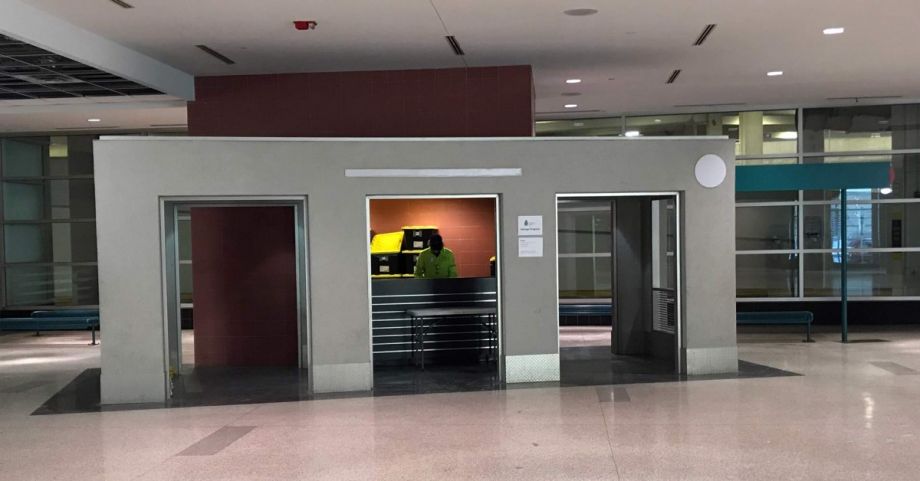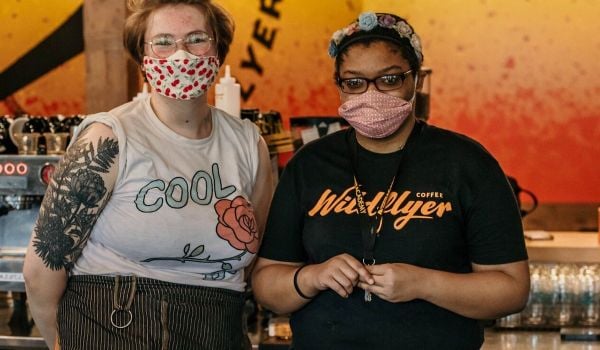People experiencing homelessness navigate a host of decisions every day that sheltered people rarely have to think about. Even storing belongings is a decision with ripple effects that come to bear on everything from job interviews to medical care.
To support Minneapolis’ unhoused residents, the city has followed in the footsteps of other cities like San Diego and Los Angeles by partnering with a local organization to pilot a storage program for those experiencing homelessness. The pilot comes as a record number of people are experiencing homelessness across the state..
The program allows people experiencing homelessness to store their belongings in bins located in a secure room. Belongings are checked in and out of bins by staffers from Minneapolis’ Downtown Improvement District, the city’s partner in the venture. The one-room operation is open for a few hours each weekday morning. Outside of the duration of the pilot, there is currently not a limit on how long items can be stored. In order to access the bins, users only have to fill out a simple one-page document. With the goal of making the program as accessible as possible, users don’t need to provide identification or housing status in order to store their things. Users load their items into the bins in front of staff, but aren’t asked to open up any of their bags.
The $25,000 pilot began at the beginning of the year. Earlier this month, all 50 bins were full for two consecutive weeks, reports the Star Tribune — right before the novel coronavirus outbreak hit. The facility is still open by appointment only, but had to cancel its regular hours after Governor Tim Walz’s shelter-in-place order.
Ben Shardlow, the director of urban design for the Downtown Improvement District, cites San Diego’s program that launched in 2015 as inspiration. The Minneapolis Downtown Council, a membership-based downtown business association, also released a 2025 Plan in 2011 that included a goal to end street homelessness. Yet, ending homelessness requires more than just nighttime shelter.
“With the issue of homelessness, overall there’s so much focus on sleeping and the bed and not an appreciation of the other functions that a home serves. One of those functions is a place for people’s things, their belongings,” he says.
In order to get the program off the ground, Shardlow’s Downtown Improvement District team partnered with the city to find an unused city-owned space to house the pilot that would be centrally located and able to be inclusive. “That led us to the facility where we’re at now,” he says of the space that was originally designed to be a metro transit store. “It was kind of hiding in plain sight.”
The storage room is staffed by members of the Downtown Improvement District’s ambassador program, who are usually tasked with watering flowers and giving directions. Shardlow’s hope was that a handful of staff would take the majority of the shifts and get to know the clientele, and that’s exactly what happened. Staff have gotten a layered look into some of the storage needs of the city’s homeless, information that Shardlow hopes to incorporate into a future, more permanent storage solution, whatever that may look like.
“I can say there is full political will for [the program] and for continuity. If the location has to move, [we’ll be] making sure it’s seamless for the people receiving services,” he says. Shardlow adds that “expanding the hours is of the program is very much on the table” when thinking about what more permanent, future iterations might look like.
Despite the program ultimately being in its earliest stages, Shardlow has come across powerful testimonials about the assistance that something as simple as a place to store things can bring to a homeless person’s experience. It’s easier to stand a chance in a job interview when you don’t have to bring everything you own with you or stash it in the bushes outside and worry about your only necessities the entire time.
Robert Kleen is an advocate with Street Voices for Change, groups of individuals who bring their personal experiences with homelessness to conversations and initiatives designed to address it. Kleen agrees that storage is a key element of support for homeless people — in fact, he describes it as his main concern.
“When you don’t have to carry all your stuff with you, you’re free to go to a job interview or a housing appointment or a doctor’s appointment,” he says. “If you carry your bags with you into a doctor’s office, they know you’re homeless immediately. Then you get different care than regular people, so that’s what I’m trying to avoid.”
Today, in his interactions with others experiencing homelessness, Kleen steers them towards the downtown storage center every chance he gets. Shardlow is hopeful that such enthusiasm will propel the program into a more permanent future.
“It’s deceptively simple,” he says. Plastic tubs are not expensive. Finding a room in a parking ramp is not impossible. Not a single aspect is that complicated. I’m hopeful that we can use the political will and community will to not stop here.”
EDITOR’S NOTE: This article originally misstated that the Downtown Improvement District ambassadors were volunteers. They are paid staff; the article has been corrected.

Cinnamon Janzer is a freelance journalist based in Minneapolis. Her work has appeared in National Geographic, U.S. News & World Report, Rewire.news, and more. She holds an MA in Social Design, with a specialization in intervention design, from the Maryland Institute College of Art and a BA in Cultural Anthropology and Fine Art from the University of Minnesota, Twin Cities.
Follow Cinnamon .(JavaScript must be enabled to view this email address)
















